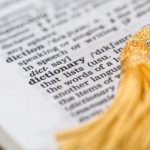The reading section of the SAT can seem daunting, especially if you do not consider English your forte. However, it only takes a bit of strategy and some strong effort to get you where you want to be on this section. Here, we will discuss the four most common question types on the SAT reading section and how to approach them.
Providing Textual Evidence
The reading section of the SAT is heavily context-based. As a result, the test will often expect you to provide evidence to support your answers. These types of questions will typically appear in pairs: one asking you to answer a general reading question and a second question asking you to provide evidence for the previous answer. The most foolproof way to approach these questions is to tackle the evidence question first, ensuring you choose a line from the passage that actually answers the question. Then, choose the answer that matches the evidence you are going with. Always remember, when questions give you four lines from the passage as answer choices, they are telling you that the correct answer is in one of those four lines. Use this logic to your advantage.
Words in Context
There are quite a few questions on the reading section that will ask you to define words in context. While it is important to know the meaning of words, the SAT loves to test over words that have multiple meanings depending on how they are being used. Thus, it is always important to read the entire sentence a vocabulary word is found in to maximize your understanding of the context. Then go through each answer choice and ask yourself two questions: “does this word make sense in the sentence?” and “does the sentence still have the same meaning?” If your answer to both of these questions is not yes, that word is not your answer.
Main Purpose
You will often see questions asking you to provide the main purpose, summary, central claim, etc. of a passage or paragraph. With these questions, look for answer choices that are true, but general or broad enough to describe the entire section in question. True statements can be incorrect answers if they are too detailed to actually answer the question being asked. Always look for something that could work as a one-sentence summary of the section in question.
Graphs, Figures, and Tables
There will generally be a handful of questions that refer to a graph, table, or figure that accompanies the passage. On these, the most important thing to remember is to ensure the answer choice you select can actually be supported by the graph. True statements can be wrong answers if they are unrelated to the information the figure is giving you.
Combined, these four types of questions correspond to approximately 80% of the SAT reading section. If you are able to master these strategies, you will be well on your way to scoring very highly on this section.







